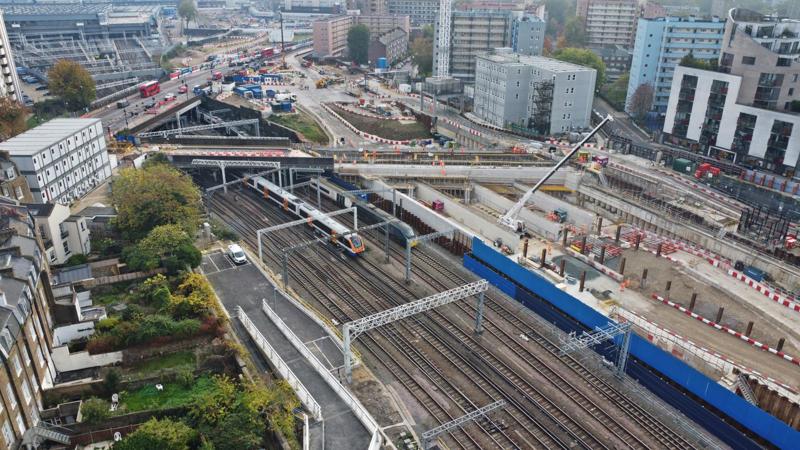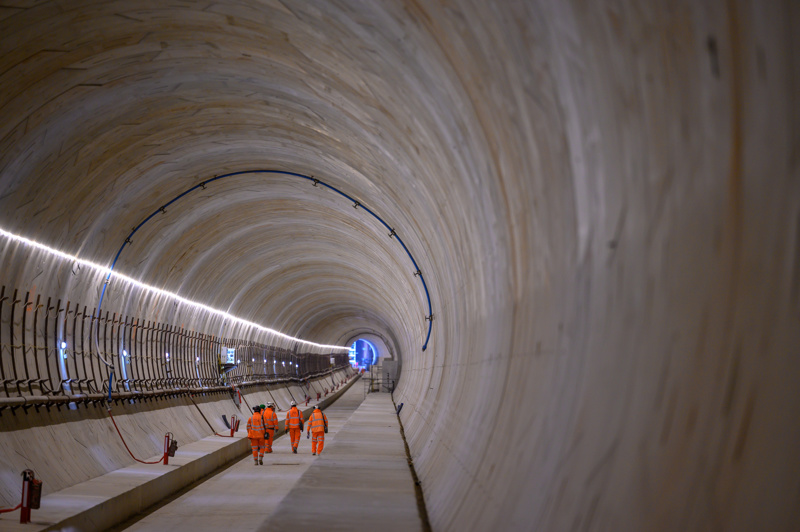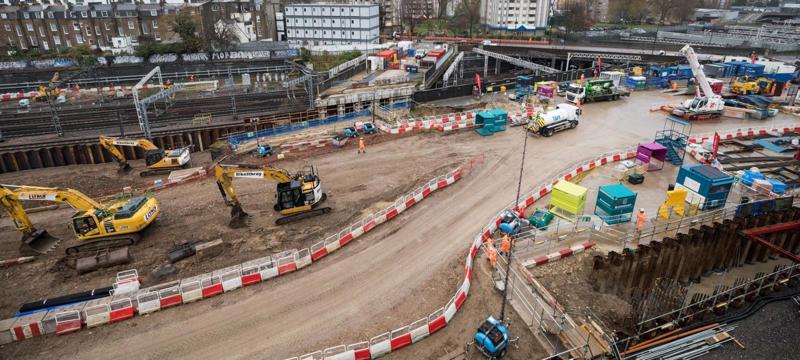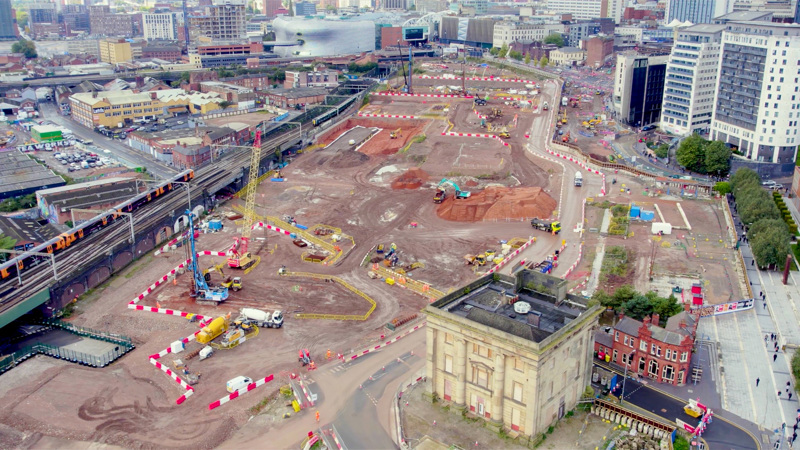
“The HS2 programme has become a casebook example of how not to run a major project”.

“The HS2 programme has become a casebook example of how not to run a major project”.
That’s the highly critical introduction of a damning report into the project by MPs on the Public Accounts Committee (PAC) which lists numerous failings by both HS2 Ltd and the Department for Transport (DfT) who have “failed to work together effectively”
The report, HS2: Update following the Northern leg cancellation, says: “It is unacceptable that over a decade into the programme we still do not know what it will cost, what the final scope will be, when it will finally be completed or what benefits it will deliver.”
The report highlights DfT’s November 2023 estimated range was £45-54 billion, compared to HS2 Ltd’s £54-66bn in June last year as one example where the two parties are not in sync.
“With their competing cost estimates still in 2019 prices, then once adjusted for inflation the total programme costs might be close to £80 billion,” the report says.
It continues: “The DfT has failed in its oversight and financial control over one of our most important public sector projects and there is now a reputational risk to the UK.
“Previous warnings from the Public Accounts Committee on the lack of oversight by the Department were not heeded, leaving us with little confidence that the steps being taken now to control costs will make a significant difference.”
Reset of HS2
The 2025 reset will involve both DfT and HS2 Ltd working together to reach an agreed methodology to calculate the revised cost estimate, renegotiating contracts to more fairly allocate the risk and provide a commercial incentive to contractors, balance environmental obligations against costs and ensuring the project has people with the correct skills.
New Chief Executive Mark Wild, who delivered Crossrail, is tasked with delivering the reset. He previously told PAC that he needs to reinforce HS2 Ltd’s capability, particularly commercial management in the teams that are managing the contractors, bear down on costs and drive productivity; create an organisation that will operate the railway in the future; and focus HS2 Ltd’s culture on the singular purpose of delivering Phase 1 at the lowest feasible cost.
MPs noted though: “We have seen the same issues time and again, with a reset of the programme already needed in 2020 due to escalating costs and delays to the schedule. The fact that another reset is now needed less than five years later points to a failure of governance and oversight.”
Public Accounts Committee recommendations

The report makes eight conclusions which include the DfT and HS2 Ltd sharing responsibility for repeated failures of the project, their failure to work together effectively and their lack of skills to successfully deliver the programme.
PAC has asked for both parties to write to the committee before this year’s summer recess setting out how they are resetting the programme. DfT must set out its changes to improve oversight and financial control of HS2, an agreed cost estimate methodology, updates on contact renegotiations and the level of savings made and how it will address skills gaps.
HS2 Ltd, as part of a recommendation in response to a conclusion that its construction. Contracts are “unacceptable to the public purse”, must set out what steps it will take if contacts cannot be renegotiated to provide better value for money.
PAC also concluded that efforts to reduce the line’s environmental impact are not delivering value for money, saying the right balance had not been struck between protecting the landscape and wildlife and the burden on taxpayers.
Highlighting the £100 million, one-kilometre-long ‘bat tunnel’, and £73m cost of building the underlying stretch of railway, PAC noted: “The fact that the Department and HS2 Ltd chose this solution leaves us concerned that the cost to the public purse was not properly front and centre to their decision making.”
DfT has been told it should set out how it will work with the Department for Environment, Food and rural Affairs to “assess what impact the new nature restoration fund would have had on the section of the line where the bat tunnel is, and use that case study to help refine the operation of the fund”.
DfT should also include updates on Euston in its six-monthly reports to Parliament in response to concerns about its scope, cost, funding, schedule and delivery model. PAC’s report says the scope of work needed at Euston remains “unclear”, with a new HS2 station needed alongside redevelopments of both the Network Rail and London Underground stations.
The report also concludes that decisions on land disposals are being made too slowly. PAC has asked HS2 Ltd to assess residential properties and identify what’s surplus to requirements and given to former owners for the chance to buy back, while DfT should outline the timetable for decision-making regarding all property.
The report also notes that both DfT and HS2 Ltd have “repeatedly said they are learning lessons but there is little evidence that lessons have been applied effectively and mistakes avoided”.
It says DfT should set out what lessons they have drawn and explain how they will put those into practice.
Euston

DfT told PAC Euston now has a holistic approach with a delivery model and set up of delivery company over the next year.
“It also told us that, on the development corporation, there are two models being considered–one mayoral–led and one led by the London Borough of Camden. The Department is talking to both the Greater London Authority and Camden Council about which would be preferred,” the report says.
PAC has challenged DfT on the necessity and added risk of another delivery body at Euston, but said the task at Euston was “quite different to HS2 Ltd’s core mission of building a railway”, with commercial and residential properties also planned above and around the stations.
DfT also responded to questions on the likelihood of obtaining more than £6bn from the private sector by saying funding would come from private financing of the station, receipts from commercial development, tax increment finance contributions/local government contributions and some residual public funding.
“The Department told us that it had carried out some early market–testing of the potential for private financing and as a result believes it is a viable option. The Department said that once decisions are taken on the delivery model and spatial allocation, and the detailed design of the station has begun, there will be a better understanding of the potential commercial return and likely level of private investment,” the report notes.
HS2 Phase 2

With relation to the cancelled Phase 2, PAC has said questions remain. These include how DfT will dispose of land and how it will address future West Coast Main Line capacity issues.
PAC’s report said the cancellation of the section between Birmingham and Manchester will only address capacity issues between London and Birmingham.
“The Department is exploring options to run longer HS2 trains north of Birmingham, but this would require additional works at existing stations,” the report says. “Further options for addressing capacity issues include managing demand for rail services or investing in infrastructure such as additional tracks and longer platform.
“The Department acknowledged the capacity challenge on the West Coast Main Line as a consequence of not building Phase 2, estimating that it will reach capacity by the late 2030s.”
The report says DfT is also looking at smaller-scale infrastructure investments or optimise services using both HS2 and existing trains, though DfT admitted that would “only delay” the capacity problem north of Birmingham “rather than resolve it”.
It also said DfT is looking at how to improve east-west rail connectivity in the north of England but potentially “as a series of programmes and choices ‘rather than a big totemic thing’ as originally envisaged by Northern Powerhouse Rail”.
Responses
HS2 Ltd said Wild agreed with PAC that there had been a failure in management of HS2's cost and schedule and was "taking decisive action to get the project back on track at the lowest feasible cost".
“His fundamental reset is critical to ensure the successful delivery of HS2's goals – driving economic growth and connecting our biggest cities with fast and reliable journeys," a spokesperson said.
DfT described HS2's "continuously climbing costs" as "completely unacceptable".
A spokesperson said: "That is why the Government acted swiftly to get the project back under control by bringing new leadership to HS2 Ltd, directing the company to begin work on resetting culture, schedule and costs, and reinstating robust ministerial oversight.
“HS2 Ltd is working with its supply chain to reset the programme and deliver the railway safely and at the lowest reasonable cost.”
Login to continue reading
Or register with RAIL to keep up-to-date with the latest news, insight and opinion.


















Oz24_7 - 28/02/2025 16:23
Always suspected it was a bad plan. Ridiculous amount of money wasted to serve the few. Not the many. Whom are these people that make these terrible decisions. I would sack them. Sad times UK